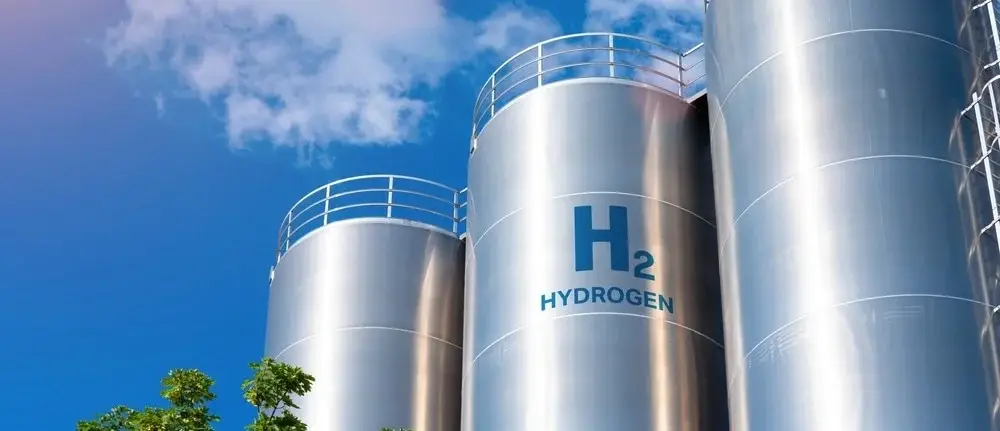Strengthening the Hydrogen Economy through Acidic Storage
In today’s article, we’ll look at how Formic Acid, Magnesium Borohydride and LOHCs may pave the way to wider implementation of hydrogen fuel, bolstering the hydrogen economy.

The Hydrogen Conundrum
Hydrogen as a fuel source has had varying levels of popularity since its discovery in the 18th century.
One of the biggest challenges facing feasible use has always been storage of the fuel; hydrogen gas is highly flammable and requires strict safety protocols for store and transport.
Meanwhile, liquid hydrogen must be stored at cryogenic temperatures or in high pressure cylinders… hydrogen storage is difficult whichever way you look at it.
For this reason, storage, or transport, of hydrogen in acid has proven to be an interesting means of overcoming these problems, with the first breakthrough in this approach being made in the 1980s with the use of formic acid.
The pursuit of clean and sustainable energy sources over recent years has continued, and placed hydrogen as a favourite to replace fossil fuels such as petrol and diesel.
However, the problems surrounding efficient storage of hydrogen have not been entirely solved.
These difficulties create significant barriers in the advancement of the hydrogen economy and stifle widespread adoption of hydrogen as a fuel.
For this reason, extensive research is being carried out around the globe into alternative means of storing hydrogen.
Three promising potential means are Formic Acid, Magnesium Borohydride, and Liquid Organic Hydrogen Carriers (LOHCs).
Formic Acid
While one of the earlier materials identified as a hydrogen carrier, research continues into the applied use of formic acid for hydrogen storage.
Formic acid (HCOOH) operates as a carrier molecule, combining with hydrogen gas when exposed to the right conditions.
This means of storing hydrogen is far safer than gas or liquid alternatives and eliminates the requirement for high-pressure cylinder storage or cryogenic temperatures.
A drawback of using formic acid, however, is that it stores less hydrogen per unit volume than pure hydrogen gas, which means it is less viable for applications such as powering vehicles or equipment.
Another drawback is that the process of converting hydrogen to formic acid, and back again, involves chemical reactions and catalysts which can add complexity to an already complicated system.
Magnesium Borohydride
By contrast, magnesium borohydride (Mg(BH₄)₂) offers a potentially promising means of storing hydrogen and bolstering the hydrogen economy.
It boasts several advantages over traditional storage and transport methods which require high pressure or extremely low temperatures, principally:
- High-density storage: Magnesium borohydride facilitates storage of a significant amount of hydrogen per unit volume, without requiring extreme temperatures. This characteristic makes it very attractive for applications that require high energy density, for example powering vehicles.
- Simplified use: because it can be stored at room temperature, there’s no need for maintaining cryogenic temperatures or high-pressure containers. This makes handling inherently safer and more feasible in domestic or non-industrial applications.
Challenges, however, exist with the use of magnesium borohydride.
Releasing hydrogen from this medium involves complex chemical reactions, so to be put into practical use further research into optimization is therefore required.
Furthermore, the dehydrogenation process generates hazardous byproducts such as diborane, (B2H6, a colourless toxic gas which ignites spontaneously in air), and boron hydrides.
It’s crucial that these and other byproducts are safely managed during the production process, however, they may potentially also be used in the overall hydrogen cycle – boosting efficiency and minimising waste.
Research into the application of magnesium borohydride as a hydrogen store continues to advance.
A significant development for example has been made by a team at UNIST, South Korea; they’ve created a nanoporous magnesium borohydride structure which offers increased hydrogen storage capacity.
Naturally this development bolsters the potential of the hydrogen economy.
Liquid Organic Hydrogen Carriers (LOHCs)
LOHCs offer an alternative means of “storing” hydrogen to approaches which utilise formic acid, or magnesium borohydride.
LOHCs in the form of organic liquids react with hydrogen gas under specific conditions, which in turn forms a hydrogen-rich carrier molecule.
This process can be reversed as required, thus releasing the stored hydrogen.
The use of LOHCs comes with clear benefits.
The storage and transportation of the stored hydrogen is made far simpler than that of liquid of gaseous hydrogen, as LOHCs function at room temperature and pressure.
Furthermore, hydrogen can be added and released on a repeated basis, creating a closed-loop system.
There are, like any emerging technology, hurdles that must be overcome.
For example, the dehdrogenation process (where hydrogen is released) can be energy intensive, weakening the virtue of using such technology as a source of green energy.
There’s also research to be done into the optimal LOHC materials, which will offer the greatest hydrogen capacity and most efficient reaction cycles.
Overall, however, LOHCs present a promising advancement in the pursuit of creating a successful hydrogen economy.
Acidic Horses for Hydrogen Courses
- As you can see, both magnesium borohydride and LOHCs present potentially viable options for hydrogen storage that boost the feasibility of a robust hydrogen economy.
Like petrol versus diesel fuels, how appropriate they are is defined in part by their application:
- For end uses where maximum hydrogen storage per unit volume is a priority, such as within electric vehicles, magnesium borohydride may well be the more appropriate solution.
- Where safer and more manageable storage and transport is required, such as use at grid-scale, LOHCs may be superior.
Realising The Hydrogen Economy
With pressure from the Government as well as a more eco-aware society and culture, the race for finding viable sustainable energy alternatives to fossil fuels is well underway.
Within the field of the hydrogen economy, both formic acid, magnesium borohydride and LOHCs represent advancements that must not be underestimated despite the challenges associated with their production and end use.
The unique characteristics of these three hydrogen carrier solutions should be viewed as advantageous as they widen the scope for hydrogen fuel application – the balance between ease of production, safety of handling and overall energy density will mean that there is likely to be an optimal solution for each application.
All this considered, one thing is for certain, the continued research and innovation into practical and effective hydrogen storage is crucial in ensuring a robust hydrogen economy in the future.


